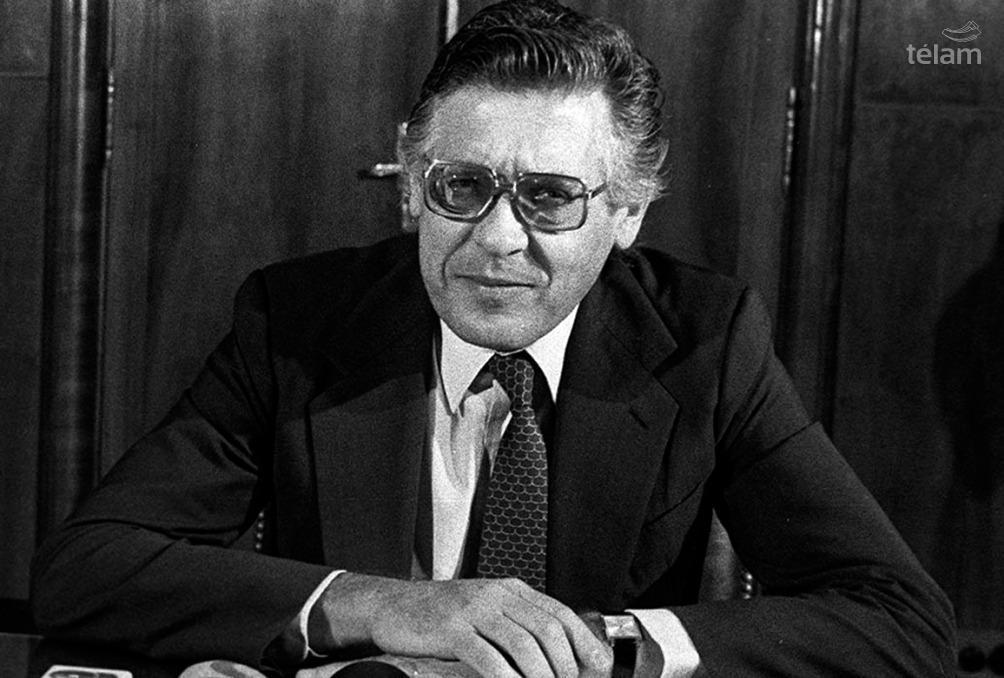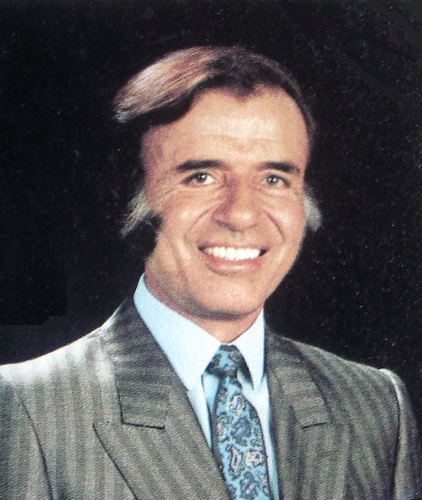|
Spring Plan
The Spring plan ( es, Plan primavera) was an Argentine economic plan designed during the presidency of Raúl Alfonsín. Development Raúl Alfonsín began his presidency with a big economic crisis and high inflation. The Austral plan The Austral plan was an Argentine economic plan devised by minister Juan Vital Sourrouille during the presidency of Raúl Alfonsín. Previous context Raúl Alfonsín became president of Argentina in 1983 through democratic elections, receiving hig ... tried to fix it by placing limits on wages and prices and limiting money printing. The plan eventually failed as unions pressured for higher wages and businesspeople pressured for higher prices. The spring plan had similar goals and sought to keep the economy stable until the 1989 presidential elections. The new plan failed as well, causing an hyperinflation near the end of Alfonsín's presidency. It was followed by the BONEX Plan, during the new Menem administration. References * {{Economy of Arge ... [...More Info...] [...Related Items...] OR: [Wikipedia] [Google] [Baidu] |
Raúl Alfonsín
Raúl Ricardo Alfonsín (12 March 1927 – 31 March 2009) was an Argentine lawyer and statesman who served as President of Argentina from 10 December 1983 to 8 July 1989. He was the first democratically elected president after more than seven years of military dictatorship, and is considered the "father of modern democracy in Argentina". Ideologically, he identified as a Radical and a social democrat, serving as the leader of the Radical Civic Union from 1983 to 1991, 1993 to 1995, 1999 to 2001, with his political approach being known as "Alfonsinism". Born in Chascomús, Buenos Aires Province, Alfonsín began his studies of law at the National University of La Plata and was a graduate of the University of Buenos Aires. He was affiliated with the Radical Civic Union (UCR), joining the faction of Ricardo Balbín after the party split. He was elected a deputy in the legislature of the Buenos Aires province in 1958, during the presidency of Arturo Frondizi, and a national de ... [...More Info...] [...Related Items...] OR: [Wikipedia] [Google] [Baidu] |
Austral Plan
The Austral plan was an Argentine economic plan devised by minister Juan Vital Sourrouille during the presidency of Raúl Alfonsín. Previous context Raúl Alfonsín became president of Argentina in 1983 through democratic elections, receiving high inflation rates and a significant external debt taken on by the outgoing Military government. His first minister of economy, Bernardo Grinspun, attempted to negotiate regular increases in wages to keep up with inflation, which did not work. The country was close to a sovereign default in late 1984, and prevented it with foreign funding. Grinspun resigned the following year, as the debt was even higher and the IMF would block further credits. Alfonsín said that democracy had little to offer "unless the economic question is definitely resolved".Rock, p. 398 Characteristics The Austral plan was designed by the new minister, Juan Vital Sourrouille. It froze prices and wages, stopped the printing of money to mitigate inflation and enacted s ... [...More Info...] [...Related Items...] OR: [Wikipedia] [Google] [Baidu] |
1989 Argentine General Election
The Argentine general election of 1989 was held on 14 May 1989. Voters chose both the President of Argentina, President and their legislators and with a turnout of 85.3%, Carlos Menem won the presidency, and the peronist Justicialist Party won the control of both houses of Congress. This is the last presidential election the president was elected by the electoral college. Background Inheriting a difficult legacy from his National Reorganization Process, military predecessors, President Raúl Alfonsín's tenure had been practically defined by the foreign debt Argentina's last dictatorship left behind. Signs of unraveling in Alfonsín's 1985 Argentine austral, Austral Plan for economic stabilization cost his centrist Radical Civic Union (UCR) its majorities in the Argentine Chamber of Deputies, Chamber of Deputies (lower house of Congress) and among the nation's 22 governorships in the September 1987 mid-term elections. Facing a restive armed forces opposed to trials against pas ... [...More Info...] [...Related Items...] OR: [Wikipedia] [Google] [Baidu] |
BONEX Plan
The BONEX Plan was a forced conversion of bank time deposits to Treasury bonds performed by the Argentine government in January 1990. It was put in place following a 3079,5% hyperinflation in 1989, as heterodox stabilization programs failed. US$3 billion worth of the public's deposits were converted to "Bonex 89" bonds to be repaid in 1999. It amounted to a partial default from the Central Bank and Treasury to commercial banks, who in turn partially defaulted into their depositors. It was caused by the government's political inability to undertake rigorous fiscal reforms, and a monetary sterilization policy which generated a major 'quasi fiscal' deficit to the Central Bank, further fueling a long-standing high inflation rate. Its high debt made the Central Bank lost most of its capacity to carry out independent monetary policy. A freezing of deposits was also undertaken in neighbor country Brazil at the time, during the Plano Collor. Background In 1985, then-president Raúl ... [...More Info...] [...Related Items...] OR: [Wikipedia] [Google] [Baidu] |
Carlos Menem
Carlos Saúl Menem (2 July 1930 – 14 February 2021) was an Argentine lawyer and politician who served as the President of Argentina from 1989 to 1999. Ideologically, he identified as a Peronist and supported economically liberal policies. He led Argentina as president during the 1990s and implemented a free market liberalization. He served as President of the Justicialist Party for thirteen years (from 1990 to 2001 and again from 2001 to 2003), and his political approach became known as Federal Peronism. Born in Anillaco to a Syrian family, Menem was raised as a Muslim,"Carlos Menem" ''Encyclopædia Britannica'' but later converted to to pursue a political career. Menem b ... [...More Info...] [...Related Items...] OR: [Wikipedia] [Google] [Baidu] |
Presidency Of Raúl Alfonsín
Raúl Alfonsín was the president of Argentina from 1983 to 1989. New beginning ] Chief among Alfonsín's inherited problems was an economic depression stemming from the 1981-82 financial collapse and its resulting US$43 billion foreign debt, with interest payments that swallowed all of Argentina's US$3 billion trade surplus. The economy recovered modestly in 1983 as a result of Bignone's lifting of wage freezes and crushing interest rates imposed by the Central Bank's "Circular 1050;" but inflation raged at 400%, GDP per capita remained at its lowest level since 1968 and fixed investment was 40% lower than in 1980.''Statistical Abstract of Latin America''. UCLA Press, Los Angeles. Naming a generally center-left cabinet led by Foreign Minister Dante Caputo and Economy Minister Bernardo Grinspun (his campaign manager), Alfonsín began his administration with high approval ratings and with the fulfillment of campaign promises such as a nutritional assistance program for the 27% ... [...More Info...] [...Related Items...] OR: [Wikipedia] [Google] [Baidu] |
Economic History Of Argentina
The economic history of Argentina is one of the most studied, owing to the "Argentine paradox." As a country, it had achieved advanced development in the early 20th century but experienced a reversal, which inspired an enormous wealth of literature and diverse analysis on the causes of this decline. Since independence from Spain in 1816, the country has defaulted on its debt nine times; inflation has often risen to the double digits, even as high as 5000%, resulting in several large currency devaluations. Argentina possesses definite comparative advantages in agriculture because the country is endowed with a vast amount of highly fertile land. Between 1860 and 1930, exploitation of the rich land of the pampas strongly pushed economic growth. During the first three decades of the 20th century, Argentina outgrew Canada and Australia in population, total income, and per capita income. By 1913, Argentina was the world's 10th wealthiest state per capita. Beginning in the 1930s, ... [...More Info...] [...Related Items...] OR: [Wikipedia] [Google] [Baidu] |
Inflation In Argentina
The economy of Argentina is the second-largest national economy in South America, behind Brazil. Argentina is a developing country with a highly literate population, an export-oriented agricultural sector, and a diversified industrial base. Argentina benefits from rich natural resources. Argentina's economic performance has historically been very uneven, with high economic growth alternating with severe recessions, particularly since the late twentieth century. Income maldistribution and poverty have increased since this period. Early in the twentieth century, Argentina had one of the ten highest per capita GDP levels globally. It was on par with Canada and Australia, and had surpassed both France and Italy. Argentina's currency declined by about 50% in 2018 to more than 38 Argentine pesos per U.S. Dollar. As of that year, it is under a stand-by program from the International Monetary Fund. In 2019, the currency fell further by 25%. In 2020, it fell by 90%, in 2021, 68%, and a ... [...More Info...] [...Related Items...] OR: [Wikipedia] [Google] [Baidu] |
1988 Establishments In Argentina
File:1988 Events Collage.png, From left, clockwise: The oil platform Piper Alpha explodes and collapses in the North Sea, killing 165 workers; The USS Vincennes (CG-49) mistakenly shoots down Iran Air Flight 655; Australia celebrates its Bicentennial on January 26; The 1988 Summer Olympics are held in Seoul, South Korea; Soviet troops begin their withdrawal from Afghanistan, which is completed the next year; The 1988 Armenian earthquake kills between 25,000-50,000 people; The 8888 Uprising in Myanmar, led by students, protests the Burma Socialist Programme Party; A bomb explodes on Pan Am Flight 103, causing the plane to crash down on the town of Lockerbie, Scotland- the event kills 270 people., 300x300px, thumb rect 0 0 200 200 Piper Alpha rect 200 0 400 200 Iran Air Flight 655 rect 400 0 600 200 Australian Bicentenary rect 0 200 300 400 Pan Am Flight 103 rect 300 200 600 400 1988 Summer Olympics rect 0 400 200 600 8888 Uprising rect 200 400 400 600 1988 Armenian earthquak ... [...More Info...] [...Related Items...] OR: [Wikipedia] [Google] [Baidu] |



.jpg)



